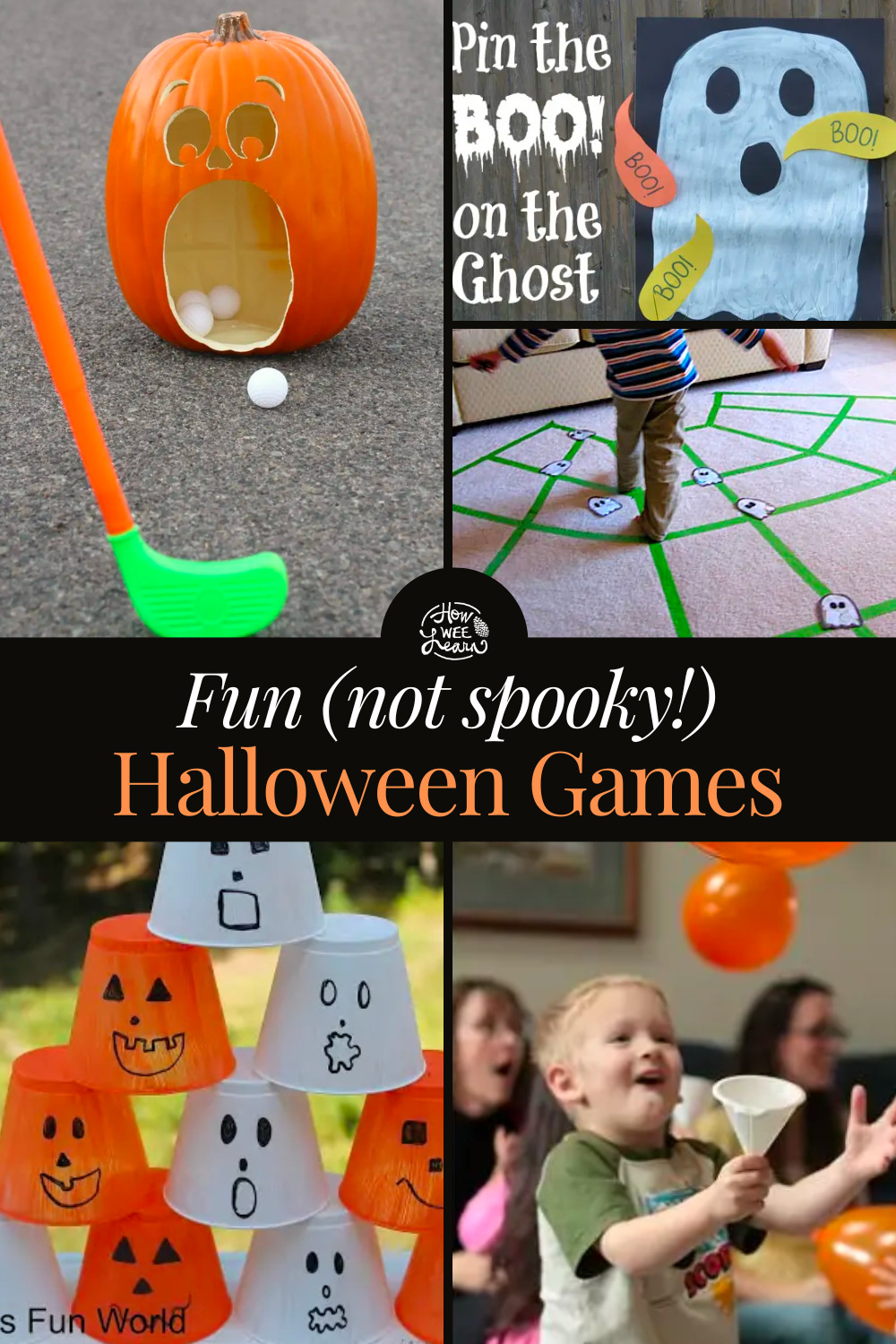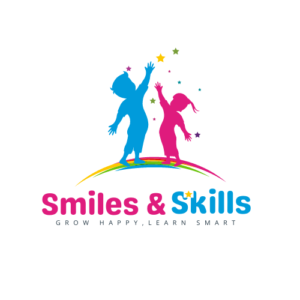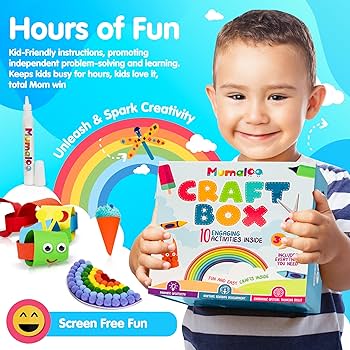Preschool pumpkin activities involve fun and educational games and crafts that help young children learn about pumpkins. Introduce autumn’s most iconic symbol to your little ones with these engaging activities.
From pumpkin painting and carving to sensory play and counting games, these preschool activities are designed to promote creativity, motor skills, and early learning concepts. By incorporating pumpkins into various hands-on activities, children can explore the different textures, colors, and shapes of pumpkins, while also developing important skills such as fine motor coordination, letter recognition, and number sense.
Whether it’s making pumpkin slime, conducting a pumpkin investigation, or creating pumpkin-themed art, these activities are sure to delight and engage preschoolers while fostering a love for learning.
Embracing Pumpkin Activities In Preschool
Preschoolers will have a blast with pumpkin-themed activities, fostering creativity and learning. From pumpkin carving to sensory play, these engaging activities offer endless fun for little ones.
The Value Of Thematic Learning
Thematic learning is a powerful tool in preschool education, as it allows children to dive into a specific subject and explore it in a comprehensive manner. When it comes to incorporating pumpkins into the curriculum, preschoolers not only have fun but also develop vital cognitive and motor skills. By focusing on pumpkins as a theme, children engage in various activities that foster their creativity, problem-solving abilities, language development, and more.
Combining Education With Seasonal Fun
Combining education with seasonal fun is a fantastic way to keep preschoolers engaged in the learning process. Pumpkins offer a wealth of opportunities for hands-on learning, art projects, and exploration. By integrating pumpkin activities into the curriculum, teachers create a stimulating environment that encourages curiosity, critical thinking, and a love for learning. The excitement of the fall season combined with educational activities related to pumpkins helps preschoolers stay motivated and enthusiastic about their lessons.
Encouraging Sensory Experiences With Pumpkin Activities
Sensory experiences play a crucial role in a child’s development, and pumpkin activities provide the perfect opportunity to engage all their senses. Touching the bumpy surface of a pumpkin, smelling its earthy aroma, and even tasting pumpkin treats stimulate the senses and help children make meaningful connections with the learning material. Moreover, sensory activities with pumpkins promote fine motor skills, hand-eye coordination, and sensory integration, ensuring a holistic learning experience.
Pumpkin Fun: A Learning Adventure
Welcome to the exciting world of pumpkin fun! Preschoolers are in for an interactive and educational experience as they dive into the wonders of pumpkins. From exploring textures and colors to connecting literature with pumpkin-themed storybooks, and indulging in creative expressions through arts and crafts, the learning opportunities are endless. Let’s embark on this delightful adventure and discover how pumpkins can ignite curiosity and spark young minds.
Pumpkin Exploration: Texture And Color Discoveries
Prepare for an exploration that engages the senses! Pumpkins come in various shapes, sizes, and colors, making them a perfect tool for hands-on learning. Preschoolers can delve into a world of texture and color discoveries by:
- Feeling the bumpy and smooth surfaces of different pumpkins
- Noting the vibrant hues, ranging from oranges and yellows to whites and greens
- Observing the differences between a ripe pumpkin and an unripe one
Through these tactile experiences, children develop their sensory abilities while simultaneously expanding their knowledge of textures and colors. Exploring pumpkins in this way enhances their cognitive and language development by encouraging them to describe what they see and feel.
Literary Connections: Storybooks About Pumpkins
What better way to inspire a love for reading than through the magical world of storybooks? Preschoolers can embark on a literary adventure centered around pumpkins. Here’s a list of captivating storybooks that will transport young minds into the enchanting realm of pumpkins:
- The Legend of Spookly the Square Pumpkin: This heartwarming tale celebrates uniqueness and teaches valuable life lessons.
- Pumpkin Soup: Join the adventures of a cat, a squirrel, and a duck as they cook up a delicious batch of pumpkin soup.
- Too Many Pumpkins: Discover the joy of sharing as Rebecca Estelle turns her pumpkin predicament into a community celebration.
By engaging with these storybooks, preschoolers not only enhance their storytelling abilities but also develop their comprehension and language skills. Additionally, they gain a deeper appreciation for the enchanting world of pumpkins, fostering a love for books and reading.
Creative Expression With Pumpkin Arts And Crafts
Unleash the inner artist in every preschooler with engaging pumpkin-themed arts and crafts! Let their creativity flourish as they explore various artistic techniques while working with this iconic fall symbol. Here are a few ideas to get started:
| Activity | Description |
|---|---|
| Pumpkin printing: | Create unique pumpkin art by using carved pumpkins as printing stamps. |
| Pumpkin collages: | Encourage creativity by making collages using pumpkin cut-outs, leaves, and other fall-themed materials. |
| Pumpkin masks: | Let imaginations run wild as preschoolers design and decorate their very own pumpkin masks. |
Through these artistic endeavors, children refine their fine motor skills, spatial awareness, and imagination. Engaging in pumpkin-themed arts and crafts allows them to express themselves while discovering their own unique artistic abilities.
Fine Motor Skills Through Pumpkin Crafts
Involving young children in pumpkin-themed crafts is an ideal way to enhance their fine motor skills while enjoying the spirit of the season. From carving patterns to creating pumpkin stamps and assembling a sensory bin, these engaging activities engage their little hands and fingers, promoting dexterity and hand-eye coordination. In this blog post, we will explore various pumpkin crafts that can help preschoolers develop their fine motor skills. Let’s dive right in!
Carving Patterns And Pumpkin Scooping 101
Carving pumpkins is a popular autumn tradition that not only sparks creativity but also provides excellent opportunities for fine motor skill development. As children carefully carve out designs from the pumpkin’s shell, they practice precise hand movements, refining their fine motor capabilities. To begin, follow these steps:
- Select a pumpkin with smooth and sturdy skin, ensuring it is suitable for carving.
- Create a drainage hole at the base to make scooping out the insides easier.
- Trace a simple pattern or draw freehand on the pumpkin’s surface.
- With adult supervision, allow the children to carve along the pattern using child-friendly tools. This process encourages their hand muscles to work steadily and strengthens their grip.
- After the carving is complete, guide them through scooping out the pumpkin’s interior with a spoon or their hands. Scooping teaches them how to use their fingers effectively, improving their grip strength.
- Remember to let the children have fun while exploring their creativity!
Creating Pumpkin Stamps For Art Projects
Another enjoyable way to enhance fine motor skills is by creating pumpkin stamps for art projects. Making pumpkin stamps requires careful precision and coordination. Here’s a simple guide to get started:
- Prepare a small pumpkin and cut it in half horizontally.
- Use a spoon to remove the seeds and create a flat, clean surface on the pumpkin’s flesh.
- Provide your preschoolers with an assortment of small brushes and non-toxic, washable paint in autumn shades.
- Instruct the children to dip the brush into the paint and apply it evenly on the pumpkin’s flat surface.
- Then, help them gently press the painted side of the pumpkin onto paper or fabric to create beautiful stamped designs.
- Encourage experimentation with different brushstrokes and colors to nurture their creativity further.
- After they have finished, commend their effort and display their artwork to boost their confidence!
Assembling A Pumpkin-themed Sensory Bin
A pumpkin-themed sensory bin not only stimulates a child’s senses but also enhances their fine motor skills. It provides an excellent opportunity for them to explore various textures and practice their hand movements. Here’s a step-by-step guide:
- Start by filling a large plastic container with dried sensory materials such as orange rice or shredded orange paper.
- Add various pumpkin-themed objects like small plastic pumpkins, pumpkin-shaped erasers, and orange playdough to enrich the sensory experience.
- Include small tools like tweezers or tongs to encourage children to manipulate the objects within the sensory bin, improving their hand-eye coordination and finger dexterity.
- Allow them to explore the bin freely, feeling the different materials and manipulating the objects within it.
- Engage in conversations with them, encouraging descriptive language as they discover the various textures and shapes.
- Supervise to ensure safety and provide guidance as needed throughout this sensory experience.
By participating in these engaging pumpkin craft activities, preschoolers can enhance their fine motor skills while embracing the joy of the season. Remember, child supervision and safety are paramount during all craft projects. So, let the creativity flow, and let your little ones have a smashing time with these pumpkin-themed crafts!
Math And Science In Pumpkin Activities
When it comes to engaging preschoolers in learning, incorporating math and science into pumpkin activities is a fantastic way to spark curiosity and exploration. Not only do these activities provide hands-on experiences, but they also introduce important concepts in a fun and interactive manner. In this blog post, we will dive into three exciting areas of math and science in pumpkin activities: counting seeds for number recognition, weighing and measuring pumpkins, and understanding the life cycle of a pumpkin.
Counting Seeds For Number Recognition
Counting seeds is not only a great way for preschoolers to practice their counting skills, but it also helps develop number recognition. By engaging in this activity, children can understand the relationship between numbers and quantities while strengthening their fine motor skills.
Weighing And Measuring Pumpkins
Incorporating weighing and measuring pumpkins provides an opportunity for hands-on exploration and understanding of basic math concepts such as weight and measurement. Preschoolers can use scales to weigh different pumpkins and compare their weights. Additionally, they can use measuring tapes or rulers to measure the circumference or height of pumpkins, promoting critical thinking and spatial awareness.
Life Cycle Of A Pumpkin: Growth And Changes
Understanding the life cycle of a pumpkin is a fascinating topic for preschoolers and introduces them to the concept of growth and changes. By observing and discussing the various stages of a pumpkin’s life, children can learn about concepts like germination, sprouting, flowering, and finally, the growth of a pumpkin. This activity fosters a sense of wonder and appreciation for nature while providing a context for scientific discussions.
In conclusion, incorporating math and science into pumpkin activities provides valuable learning opportunities for preschoolers. Whether counting seeds for number recognition, weighing and measuring pumpkins, or understanding the life cycle of a pumpkin, these activities engage children in hands-on exploration, critical thinking, and a love for learning. By integrating these subjects into pumpkin-themed lessons, educators can make learning fun and meaningful for young learners.
Festivity And Social Skills Via Group Fun
Engaging in group activities during a pumpkin-themed preschool curriculum not only brings joy and excitement but also provides an excellent opportunity for preschoolers to develop crucial social skills. From pumpkin-patch field trips to collaborative pumpkin decoration and display, and sharing and turn-taking during pumpkin games, these group activities promote interaction, teamwork, and social awareness. Let’s explore how these activities contribute to an enriching learning experience for preschoolers.
Pumpkin-patch Field Trips And Social Interaction
Immersing preschoolers in the enchanting world of pumpkins through field trips to a nearby pumpkin patch is a remarkable way to foster social interaction. During these trips, children get to explore the vibrant colors, shapes, and sizes of pumpkins while engaging in conversations with their peers and educators. Encouraging them to exchange ideas, ask questions, and share their observations about pumpkins not only enhances their social skills but also inspires their curiosity and creativity.
Collaborative Pumpkin Decoration And Display
Collaboration is a fundamental aspect of group activities, and the process of decorating pumpkins together allows preschoolers to dive into teamwork while expressing their creativity. By providing a variety of materials such as paints, markers, glitter, and stickers, children can work collectively to transform plain pumpkins into unique masterpieces. This collaborative effort not only strengthens their social skills but also instills a sense of pride and accomplishment as they showcase their decorated pumpkins for all to see.
Sharing And Turn-taking During Pumpkin Games
Incorporating pumpkin-themed games into group activities not only adds excitement but also teaches preschoolers important lessons in sharing and turn-taking. Whether it’s a friendly game of pumpkin bowling or a thrilling pumpkin relay race, children learn to wait patiently for their turn while cheering on their peers. Through these interactive games, they develop empathy, cooperation, and an understanding of the importance of fairness. These lessons go beyond the pumpkin patch and can be applied to various situations, setting a solid foundation for social skills development.
Culinary Skills With Pumpkin Treats
Incorporating culinary activities into preschool lessons can be both fun and educational for young children. Pumpkin activities offer the perfect opportunity to introduce them to the world of cooking and engage their senses in a hands-on learning experience. Through easy and safe pumpkin recipes, understanding nutrition with pumpkin dishes, and practicing measurements and following instructions, preschoolers can develop valuable culinary skills while enjoying the flavors of the fall season.
Easy And Safe Pumpkin Recipes For Preschoolers
Introducing preschoolers to the world of cooking can be a delightful and memorable experience. With its vibrant color and delicious taste, pumpkin is an ideal ingredient to engage their curiosity in the kitchen. There are several easy and safe pumpkin recipes that you can try with your little ones. Let’s take a look at a few of them:
- Pumpkin Bread – Moist and flavorful, pumpkin bread is a great way to introduce children to baking. They can help mix the ingredients, measure the pumpkin puree, and enjoy the wonderful aroma as it bakes.
- Pumpkin Smoothie – A refreshing and nutritious treat, a pumpkin smoothie is an excellent way to incorporate fruit and vegetables into a child’s diet. Preschoolers can help blend the ingredients together and taste the final result.
- Pumpkin Muffins – Lightweight and fluffy, pumpkin muffins are a popular snack among kids. Little ones can assist in measuring the ingredients, stirring the batter, and watching as the muffins rise in the oven.
Understanding Nutrition With Pumpkin Dishes
While engaging in pumpkin activities, it’s essential to teach preschoolers about the importance of nutrition. Exploring the nutritional benefits of pumpkin dishes can help children develop a better understanding of healthy eating habits. Here are a few key nutrients found in pumpkin:
| Nutrient | Benefits |
|---|---|
| Vitamin A | Supports healthy vision and immune function |
| Fiber | Aids digestion and promotes feelings of fullness |
| Antioxidants | Protects against cell damage and promotes overall health |
Encourage preschoolers to learn about these nutrients by discussing and exploring different pumpkin recipes. By emphasizing the health benefits of pumpkin dishes, you can instill good eating habits in young minds while they enjoy their culinary creations.
Practicing Measurements And Following Instructions
Cooking with pumpkin treats provides an excellent opportunity for preschoolers to practice measurements and learn how to follow instructions. While preparing recipes, encourage children to participate actively by measuring ingredients and following each step carefully. This hands-on experience helps them develop their fine motor skills and enhances their understanding of basic math skills such as counting, measuring, and sequencing. By involving young children in the kitchen, you are fostering their independence and teaching them crucial life skills that will benefit them as they grow.
Seasonal Songs And Movement For Preschoolers
Engaging preschoolers in seasonal activities is not only fun, but also a great way to enhance their learning and development. When it comes to the fall season, pumpkin-themed activities are a popular choice among educators. One of the most effective ways to incorporate pumpkin activities into the preschool curriculum is through seasonal songs and movement. Not only does this provide an opportunity for preschoolers to engage with the theme, but it also encourages gross motor skills development and fosters a sense of rhythm and coordination. In this section, we will explore some exciting pumpkin-themed songs and rhythmic activities, incorporating dance and movement with a pumpkin patch parade, and promote gross motor skills development with a pumpkin obstacle course.
Pumpkin-themed Songs And Rhythmic Activities
Songs and rhythmic activities are a fantastic way to introduce preschoolers to the theme of pumpkins. Not only do songs capture their attention, but they also help to reinforce key concepts and vocabulary. Here are some pumpkin-themed songs and rhythmic activities that you can incorporate into your preschool curriculum:
- The “Pumpkin Song”: This catchy tune teaches preschoolers about the life cycle of a pumpkin while encouraging them to sing along and follow the actions.
- “Five Little Pumpkins”: This classic counting rhyme not only teaches numbers, but also reinforces the concept of subtraction as the pumpkins roll away.
- “The Pumpkin Patch Parade”: This upbeat song combines music and movement by inviting preschoolers to participate in a pumpkin patch parade. They can march, dance, and even use props to enhance their experience.
- “Pumpkin Shake”: This rhythmic activity encourages preschoolers to shake their bodies and pretend to be pumpkins ready to be harvested. It promotes coordination and creativity.
Incorporating Dance And Movement With A Pumpkin Patch Parade
A pumpkin patch parade is an exciting way to engage preschoolers in dance and movement while incorporating the theme of pumpkins. This activity can be conducted both indoors and outdoors, depending on the availability of space. Here’s how you can organize a pumpkin patch parade:
- Set up a designated area for the parade, creating a pretend pumpkin patch.
- Provide each preschooler with a pumpkin prop, such as a small pumpkin or a cut-out paper pumpkin.
- Play an upbeat song with a pumpkin-themed melody to create an energetic atmosphere.
- Encourage the preschoolers to march or dance around the pumpkin patch, showcasing their creativity and coordination.
- As they parade, ask them to identify different parts of a pumpkin, such as the stem, the leaves, and the color variation.
- Conclude the parade by inviting each preschooler to showcase their unique moves or poses with their pumpkin prop.
Gross Motor Skills Development With A Pumpkin Obstacle Course
Gross motor skills play a crucial role in a child’s overall physical development. A pumpkin obstacle course can be a fun and challenging way to promote gross motor skills while incorporating the pumpkin theme. Here’s how to set up a pumpkin obstacle course:
- Create a course using various pumpkin-themed obstacles, such as stepping stones painted like pumpkins, tunnels decorated with pumpkin faces, and mini hay bales to climb over.
- Encourage preschoolers to navigate through the obstacle course using a combination of walking, crawling, jumping, and climbing.
- Incorporate additional components such as balance beams made from logs and pumpkin-shaped bean bags to further challenge their coordination and balance.
- Provide verbal cues and support to help preschoolers overcome any difficulties they may face during the obstacle course.
- Encourage them to complete the course multiple times, promoting repetition and improvement of their gross motor skills.

Credit: www.howweelearn.com
Frequently Asked Questions Of Pumpkin Activities Preschool
Can Pumpkins Be Grown Indoors?
Yes, pumpkins can be grown indoors in containers with adequate sunlight and space. However, they need to be regularly watered and provided with the right temperature and humidity conditions for optimal growth.
How Long Does It Take For A Pumpkin To Grow?
The time it takes for a pumpkin to grow depends on the variety and growing conditions. On average, it takes about 80-120 days for a pumpkin to fully grow from planting the seeds. Factors like climate, soil quality, and care practices can also influence the growth timeline.
What Are Some Engaging Pumpkin Activities For Preschoolers?
Preschoolers can enjoy various pumpkin activities such as pumpkin painting, pumpkin seed counting, pumpkin sensory play, and pumpkin carving (with adult supervision). These activities not only provide entertainment but also promote fine motor skills, creativity, and sensory exploration in young children.
Conclusion
These pumpkin activities for preschoolers provide engaging and educational experiences. From sensory play to hands-on crafts, children can develop important skills while exploring the world of pumpkins. Incorporating these activities into lesson plans can promote learning in various subjects, such as math, science, and language.
Moreover, the versatility of pumpkins allows for endless possibilities, making them a perfect addition to any preschool curriculum. Start incorporating these activities into your lessons today for a fun and enriching learning experience.



